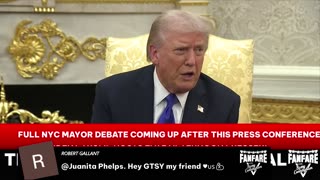Premium Only Content

Signing of the Linggajati Negotiations
Signing of the Linggajati Negotiations
Linggarjati is not only the name of an area in West Java, but also the name given to an agreement.
The Linggajati Agreement is a political agreement signed on 15 November 1946 by the Dutch government and the Republic of Indonesia.
In this agreement, the Dutch side was represented by Hubertus van Mook, while the Indonesian side was represented by Prime Minister Sutan Sjahrir.
The Linggajati Agreement is a diplomatic effort by the Indonesian government to fight for the unitary territory of the Republic of Indonesia from the clutches of the Dutch colonialists.
There were 2 specific reasons behind the negotiations at Linggarjati. First, because of the desire of the Dutch to return to power in Indonesian soil, and secondly, to resolve the protracted Indonesian-Dutch conflict.
According to the terms of the agreement, the Netherlands agreed to recognize Indonesian rule over Java, Sumatra and Madura. Indonesia would then become a state of the United States of Indonesia
which will be established no later than 1 January 1949 and form the Dutch-Indonesian Union together with the Netherlands, Suriname and the Netherlands Antilles, with the Queen of the Netherlands to be the official head of this Union.
After feeling colonialism for so long, Indonesia finally declared independence on August 17, 1945.
However, the euphoria of independence did not last long, because threats from foreign parties reappeared, namely from the Dutch.
Dutch troops who are members of NICA (Netherlands-Indies Civil Administration), come to Indonesia.
NICA took part in piggybacking on the allied forces as well as AFNEI (Allied Forces Netherlands East Indies) with the aim of disarming the defeated Japanese troops.
The suspicions of the Indonesian government and people were also proven by the fighting that took place. For example the battle on November 10 in Surabaya, the Battle of Ambarawa, and others.
Due to the prolonged conflict, the Dutch and Indonesian parties agreed to make their first diplomatic contact in the history of the two countries, with the British Government as the mediator in charge.
Negotiations were held. Indonesia and the Netherlands were invited to hold negotiations at the Hoge Veluwe on 14-15 April 1946.
However, the negotiations failed because Indonesia asked the Netherlands to recognize its sovereignty over Java, Sumatra and Madura, while the Netherlands only wanted to recognize Indonesia over Java and Madura.
After the failure in the first negotiations, the British government sent Lord Killearn to Indonesia to conclude negotiations between Indonesia and the Netherlands.
Negotiations continued on October 7, 1946 at the British Consulate General in Jakarta, Indonesia-Dutch negotiations were opened led by Lord Killearn.
These negotiations resulted in a ceasefire agreement (14 October) and paved the way for negotiations at Linggarjati which began on 11 November 1946.
After the Dutch general election in 1946, the newly formed coalition government decided to establish a "General Commission" to begin negotiations with Indonesia
whose aim was to regulate the constitution of the Dutch East Indies in the post-World War II without liberating the colony. The leader of this commission is Wim Schermerhorn.
In these negotiations, Wim Schermerhorn and his commission and Hubertus van Mook represented the Netherlands
While Indonesia was represented by Soetan Sjahrir, A.K. Gani, Susanto Tirtoprojo, and Mohammad Roem.
Then from England was represented by Lord Killearn, who acted as a mediator in this negotiation.
The results of the negotiations at Linggarjati were signed on 15 November 1946 at the Merdeka Palace, and legally signed by the two countries on 25 March 1947.
The contents of the Linggarjati Agreement are as follows
The Netherlands recognizes de facto the Republic of Indonesia with territory covering Sumatra, Java and Madura. The Netherlands had to leave the de facto area no later than January 1, 1949
The Republic of Indonesia and the Netherlands will work together to form the United Indonesia State, one of the states of which is the Republic of Indonesia
The United Republic of Indonesia and the Netherlands will form an Indonesian-Dutch Union with the Queen of the Netherlands as its chairman.
With the existence of this Linggajati agreement, politically the Republic of Indonesia gains because there is de facto recognition.
This agreement was then officially signed on March 25, 1947 at the Bijswijk Palace (Istana Merdeka) Jakarta
-
 17:14
17:14
Mrgunsngear
4 hours ago $3.83 earnedUpdate: Current Glocks Discontinued & Glock V Series Is Coming!
13.4K22 -
 2:52:54
2:52:54
Barry Cunningham
5 hours agoMUST SEE: PRESIDENT TRUMP NATO PRESSER! AND NEW YORK CITY MAYORAL DEBATE!
39K40 -
 13:15
13:15
Cash Jordan
7 hours ago"INVASION" Mob STRIKES Chicago Jail… FRONTLINE Marines IGNORE Judge, SMASH Illegals
19.6K35 -
 LIVE
LIVE
SpartakusLIVE
4 hours ago#1 Solo Challenge CHAMPION entertains HERDS of NERDS
268 watching -
 LIVE
LIVE
Alex Zedra
3 hours agoLIVE! New Game | DeathWatchers
188 watching -
 2:59:47
2:59:47
Nikko Ortiz
4 hours agoShotguns With A Magazine... |Rumble Live
12.1K -
 23:18
23:18
Lady Decade
9 hours agoThe Diversity Lie Gaming Refuses To Talk About
10.2K6 -
 2:41:05
2:41:05
Geeks + Gamers
4 hours agoGeeks+Gamers Play- MARIO KART WORLD
8.41K1 -
 5:33:12
5:33:12
Midnight In The Mountains™
7 hours agoGaming w/ Midnight | Studio is BACK and SO ARE WE | 3 AWAY FROM 1,500 WILL YOU GET ME THERE?!
4.97K3 -
 1:51:13
1:51:13
Glenn Greenwald
8 hours agoTucker Carlson Speaks at Turning Point, Prompting Cheers and Controversy; More Evidence of Israeli Atrocities Amid Fragile Ceasefire; Tommy Robinson Submits to Re-Education in Israel | SYSTEM UPDATE #536
104K106